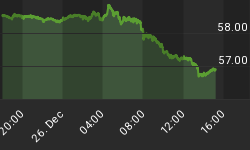I really enjoy reading, and listening to, Rob Arnott of Research Affiliates. He is one of those few people - Cliff Asness is another - who is both really smart, in a cutting-edge-research sense, and really connected to the real world of investing. There are only a handful of these sorts of guys, and you want to align yourself with them when you can.
Rob has written and spoken a number of times over the last few years about the investing implications of the toppling of the demographic pyramid in developed markets. He has made the rather compelling point that much of the strong growth of the last half-century in the US can be attributed to the fact that the population as a whole was moving through its peak production years. Thus, if "natural" real growth was something like 2%, then with the demographic dividend we were able to sustain a faster pace, say 3% (I am making up the numbers here for illustration). The unfortunate side of the story is that as the center of gravity of the population, age-wise, gets closer to retirement, this tailwind becomes a headwind. So, for example, he figures that Japan's sustainable growth rate over the next few decades is probably about zero. And ours is probably considerably less than 2%.
He wrote a piece that appeared this spring in the first quarter's Conference Proceedings of the CFA Institute, called "Whither Bonds, After the Demographic Dividend?" It is the first time I have seen him tackle the question from the standpoint of a fixed-income investor, as opposed to an equity investor. I find it a compelling read, and strongly recommend it.
Don't miss the "Question and Answer Session" after the article itself. You would think that someone who sees a demographic time bomb would be in the 'deflation' camp, but as I said Rob is a very thoughtful person and he reaches reasonable conclusions that are drawn not from knee-jerk hunches but from analytical insights. So, when asked about whether he sees an inflation problem, or continued disinflation, or deflation over the next five years, he says:
"I am not at all concerned about deflation. Any determined central banker can defeat deflation. All that is needed is a printing press. Japan has proven that. Japan is mired in what could only be described as a near depression, and it still has 1.5% inflation. So, if a central bank prints enough money, it can create inflation in an economy that is near a depression."
This, more than anything else, explains why keeping interest rates low to avert deflation is a silly policy. If deflation happens, it is a problem that can be solved. Inflation is a much more difficult problem to solve because collapsing the money supply growth rate runs counter to political realities. I don't think this Fed is worried about inflation at all, and they're probably not worried too much about deflation either any longer. But they believe they can force growth higher with accommodative monetary policy, when all available evidence suggests they cannot. Moreover, Arnott's analysis suggests that we are probably already growing at something near to, or even above, the probable maximum sustainable growth rate in this demographic reality.
Maybe we can get Arnott on the Federal Reserve Board? Probably not - no one who is truly qualified for that job would actually want it.
**Note - If you would like to be on the notification list for my new book, What's Wrong with Money?: The Biggest Bubble of All - and How to Invest with it in Mind to receive an email when the book is published, simply send an email to WWWM@enduringinvestments.com and I will put you on the list!
You can follow me @inflation_guy!
Enduring Investments is a registered investment adviser that specializes in solving inflation-related problems. Fill out the contact form at http://www.EnduringInvestments.com/contact and we will send you our latest Quarterly Inflation Outlook. And if you make sure to put your physical mailing address in the "comment" section of the contact form, we will also send you a copy of Michael Ashton's book "Maestro, My Ass!"
















